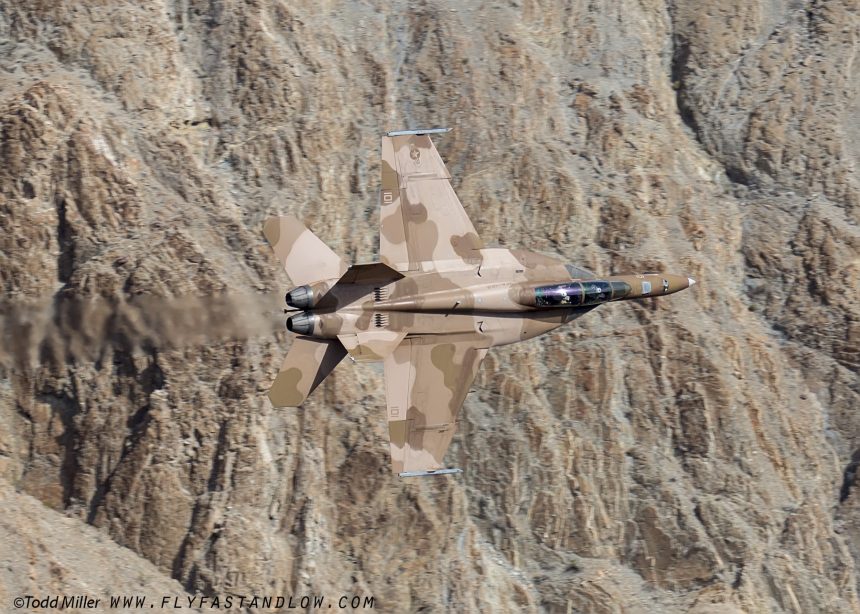This photo explains why combat planes still wear camouflaged color schemes!
A unique U.S. Navy F/A-18F bearing a brown camouflage scheme has likely had many question why a US Navy Strike Fighter would be such a color.
A recent pass by the “Rhino” deep through “Rainbow Canyon” should put those questions to rest as the jet almost disappears as it races through the canyon at a very low level.
This particular F/A-18 belongs to the VFA-122 “Flying Eagles” based out of NAS Lemoore and flown by the Fleet Replacement Squadron (FRS). The FRS is tasked to train aircrew and maintenance personnel to fly and maintain both the Legacy Hornet and the Super Hornet – or “Rhino” as it is called.
Rainbow Canyon is located adjacent to Death Valley, CA and the flight through the canyon out into the expanse of Death Valley is referred to as the “Jedi Transition.” The location has become very popular with photographers from around the world and typically has 4 to 8 aircraft pass through on any given day (though some days there are none!).
While not the Mach Loop in fame or flight frequency, it is one of the few locations in the United States photographers can catch military fighters “in the wild.”
Visitors will typically see a variety of aircraft from primarily NAS Lemoore and Edwards AFB – though aircraft are often seen from NAWS China Lake, Nellis AFB, and the CANG base Fresno, CA.
Image credit: Todd Miller
















